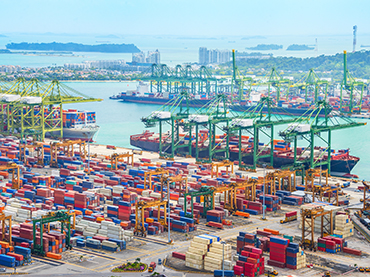Opening Remarks by Senior Minister of State for Transport, Dr Amy Khor, at the Singapore Norway Maritime Business Forum
24 Mar 2025Speeches
Mr Even Tronstad Sagebakken
Deputy Minister,
Ministry of Trade Industry and Fisheries, Norway,
Ambassadors,
Distinguished guests,
1. Good afternoon. Thank you for inviting me to the Singapore-Norway Maritime Business Forum. It is a pleasure to see many familiar faces again today, including Minister Sagebakken, whom I met when I visited Norway last year. On my trip, I was privileged to witness the promising advancements in Norway’s land and sea domains, and the potential synergies between our two countries and business communities.
2. As with all maritime nations, Singapore and Norway share an inseparable bond with the seas. Given our shared maritime heritage, the strong partnership we share today is only natural. From the initial signing of the MOU on maritime research and development, education and training between the Maritime and Port Authority of Singapore, or MPA, and the Research Council of Norway in 2000, to its renewal at last year’s Singapore Maritime Week, Singapore and Norway have consistently reaffirmed our common maritime vision.
Future-proofing the maritime industry
3. Allow me to elaborate on three areas where our two countries can future-proof our maritime sectors: by experimenting with bold ideas, working hand-in-hand with the industry to turn these ideas into reality, and upskilling and reskilling our workers so that no one is left behind.
Experimenting with bold ideas
4. First, our partnership allows us to bring together our best and brightest to experiment with bold ideas. This has propelled our efforts to decarbonise the maritime industry. I am glad that Singapore and Norway have been paving the way for the safe and efficient transition to alternative marine fuels.
5. In 2024, MPA and classification society DNV supported the world’s first dual-use of ammonia, in combination with diesel, as a marine fuel onboard the Singapore-flagged ammonia-powered vessel, Fortescue Green Pioneer. MPA and DNV worked together on the technical assessment of the vessel and the approval process of the vessel’s ammonia safety systems and design to ensure the safe adoption of new technology and systems onboard.
6. Thereafter, we shared the lessons we learned with at international platforms like the Maritime Technologies Forum, whose founding members include the Norwegian Maritime Authority, and DNV. I am happy to note that following the successful trial, MPA and Enterprise Singapore will be launching new standards for ammonia bunkering later this year. I would like to encourage Singapore and Norway to continue to boldly experiment with fresh ideas, to ensure that the maritime industry is future-proof.
Working closely with industry
7. Second, both Singapore and Norway recognise the importance of working hand-in-hand with our industry partners to transform good ideas into reality. Ideas without action remain ambitious fantasies. Our actions must meet our ambition.
8. MPA has been collaborating with industry leaders such as Yara, Kongsberg and DNV to enhance its decarbonisation and digitalisation capabilities. For example, MPA partnered with Kongsberg and other industry leaders to develop the AI-enabled Next Generation Vessel Traffic Management System prototype in MPA’s Maritime Innovation Lab. Using data analytics and machine learning, it identifies traffic hotspots and predicts collisions, enabling MPA to safely handle more complex vessel traffic situations in our waters.
9. Singaporean companies have also been collaborating with Norwegian companies and creating value for the wider ecosystem, particularly on the electrification of Singapore’s domestic harbour craft. At last year’s Singapore-Norway Innovation Conference, Lita Ocean and SeaTech Solutions signed an agreement with Evoy and Pascal Technologies to develop a fully electric high-speed harbour craft tailored for use in Singapore’s waters. Yinson GreenTech has also collaborated with Norwegian startup Zeabuz to develop autonomous technologies for its future fleet of electric vessels.
10. Likewise, our Norwegian partners have found it useful to work with Maritime Singapore to capture unique opportunities in Singapore’s domestic market as a stepping stone for further expansion abroad. A good example is ECOsubsea’s partnership with Singapore’s Eng Hup Shipping to deploy its robots for underwater hull cleaning. ECOsubsea’s robots improve vessels’ energy efficiency by removing marine biofouling. Singapore is a hub for hull cleaning, due to our high vessel arrival numbers as the largest transhipment hub in the world. This symbiotic relationship ensures that ECOsubsea can expand its business, while ships from all around the world have squeaky clean hulls after they call in Singapore! Only by working hand-in-hand with industry are we able to turn our ideas into reality.
Equipping our workers with necessary skills
11. Third, even as we future-proof our industry, we must never forget our workers. Singapore is fortunate to have a strong tripartite relationship between government, employers and unions. We strongly believe that the best way to help our people future-proof their careers is through lifelong learning.
12. In 2022, MPA and our tripartite partners established the Tripartite Advisory Panel to study ways to equip our workforce with future-ready skills. Last year, the panel published key strategies and recommendations to spur workforce transformation in the maritime industry. As a panel member, DNV played an important role in providing feedback and developing the report’s solutions. I am happy to report that these recommendations are being studied and will be implemented by the MPA-SMF Joint Office for Talent and Skills.
13. Singapore has also been making practical moves to upskill and reskill our workers. MPA is working with 56 partners, including companies like Berge Bulk, to establish the Maritime Energy Training Facility (METF).Through hands-on training courses in decentralised training facilities, seafarers and maritime personnel will learn to safely and efficiently handle alternative fuels like methanol and ammonia, and operate vessels that run on them. We look forward to more Norwegian partners joining the METF.
Conclusion
14. Singapore and Norway’s close partnership has contributed greatly to future-proofing the maritime industry and more lies in store. I hope the conversations held and the ties forged here today will continue to illuminate the way forward for both Singapore and Norway. Thank you.
